This article is from the WatchTime Archives and was originally published in July 2022.
Rattrapante chronographs, also referred to as split-seconds chronographs, are a type of chronograph with two seconds hands that allow for the ability to time multiple simultaneous events, such as runners during a race. It can also time a series of events, such as the laps a single person makes on a track. One of the hands, the so-called “rattrapante” hand, sits either directly on top of or underneath the main chronograph hand. The rattrapante hand is started and returns to zero simultaneously with the main chronograph hand. A special push-piece and an additional mechanism make it possible for the rattrapante hand to be repeatedly stopped (so that split times can be read) and then instantly brought in to renewed synchrony with the main chronograph hand by flying back to catch up with it. (“Rattrapanter” is French for “to catch again” or “to take again.”) All this occurs without affecting the motion of the main chronograph hand. Over the past few years, we’ve seen the split-second chronograph trending upward as more and more brands of all sizes add the complication to their arsenal. Here’s a selection of some noteworthy rattrapante chronographs on the market today.
F.P. Journe Chronograph Monopoussoir Rattrapante
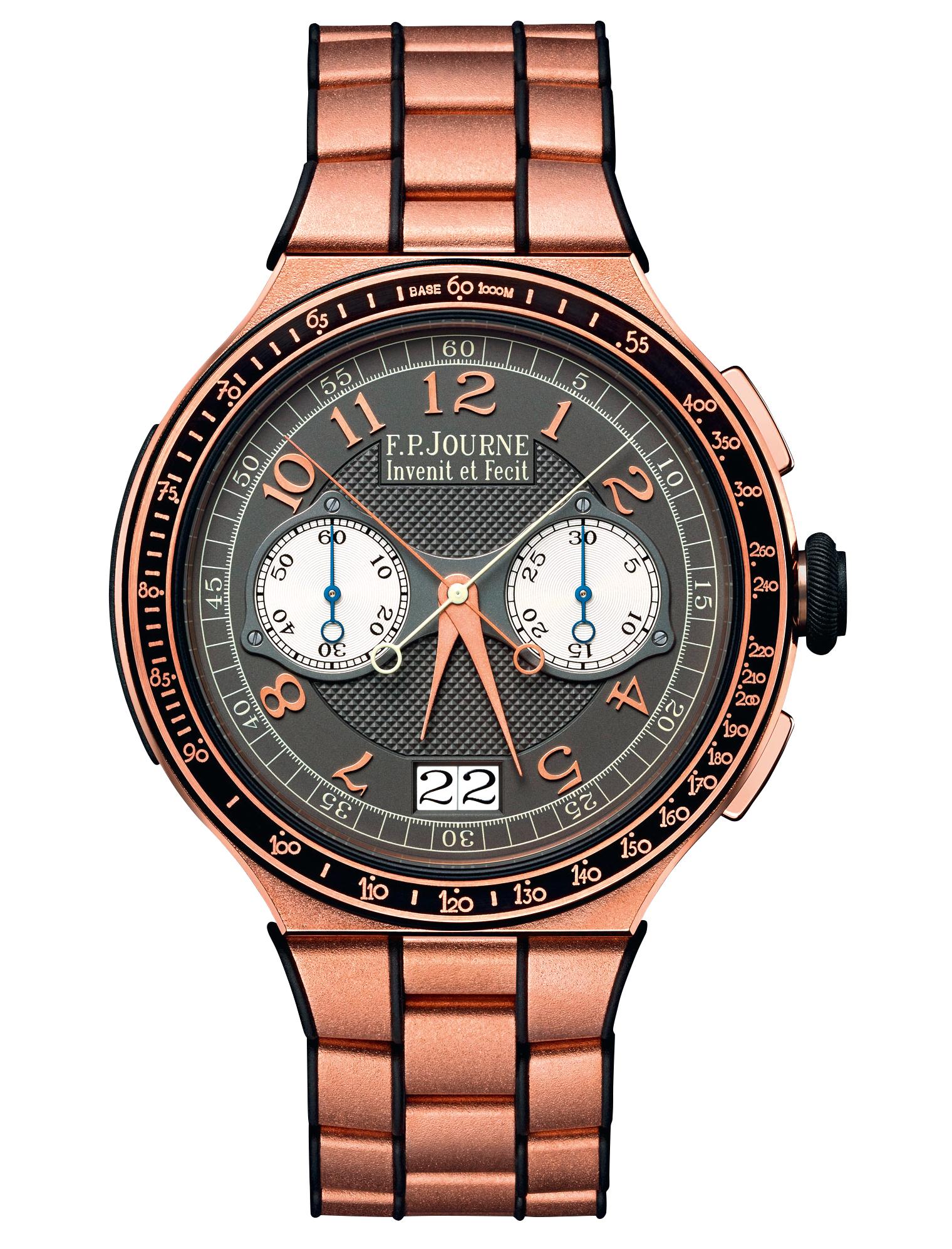
At SIHH 2018, F.P. Journe debuted the Chronograph Monopoussoir Rattrapante. You may remember F.P. Journe’s contribution to the Only Watch auction back in November 2017, which was constructed from titanium and sold for CHF 1.15 million (an auction record for an F.P. Journe timepiece). That was the inspiration for this release, with the biggest difference coming from the addition of a big date complication. The watch introduced manual-winding Caliber 1518, a monopusher split-second chronograph movement with a hearty 80-hour power reserve and direct gearing with a rocking pinion to avoid the jumping of the hand when starting the chronograph function. The watches differ from each other thanks to their colorful dials and case materials. Price: CHF 58,000 in titanium; CHF 78,000 in platinum.
IWC Portugieser Rattrapante Chronograph
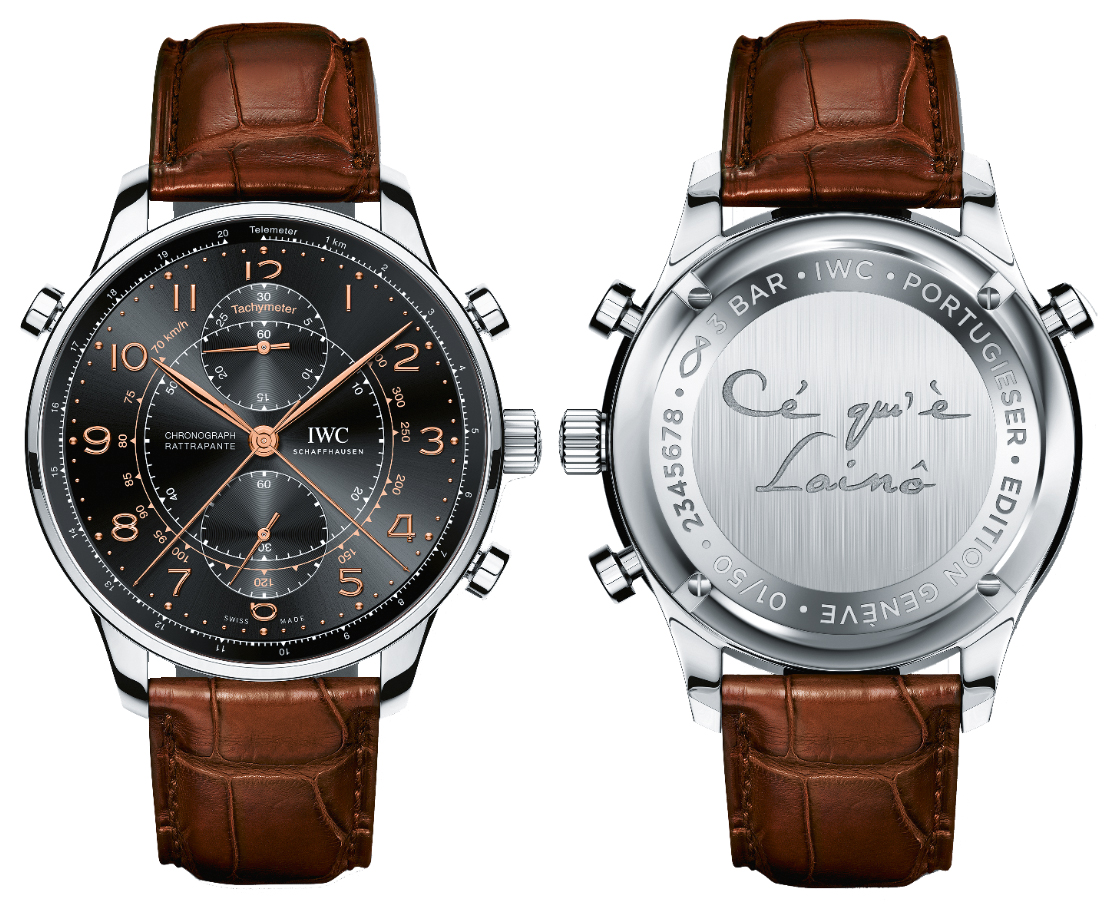
In 2017, IWC released a series of limited-edition Portugieser Rattrapante Chronographs to be sold exclusively at a selection of its boutique locations around the world. These locations included Geneva, Munich, Paris, Milan and Toronto/Vancouver, with each watch featuring a specific aesthetic to appeal to its targeted audience. Our favorite of these models during their initial release was the “Boutique Genève” edition (Ref. IW371221) that was limited to 50 total pieces and included an engraving of the title of Geneva’s 1602 anthem, Cé qu’è lainô, on its caseback. IWC introduced its first rattrapante chronograph to the Portugieser collection in 1995 when Richard Habring developed a split-seconds module for the iconic Valjoux 7750 movement. It uses a push-button at 10 o’clock to control the movement of the upper hand, while the lower hand is managed by the pusher at 2 o’clock. More recently, IWC released the Pilot’s Watch Double Chronograph Ceratanium in the lead-up to SIHH 2019.
Breitling Navitimer B03 Rattrapante Chronograph
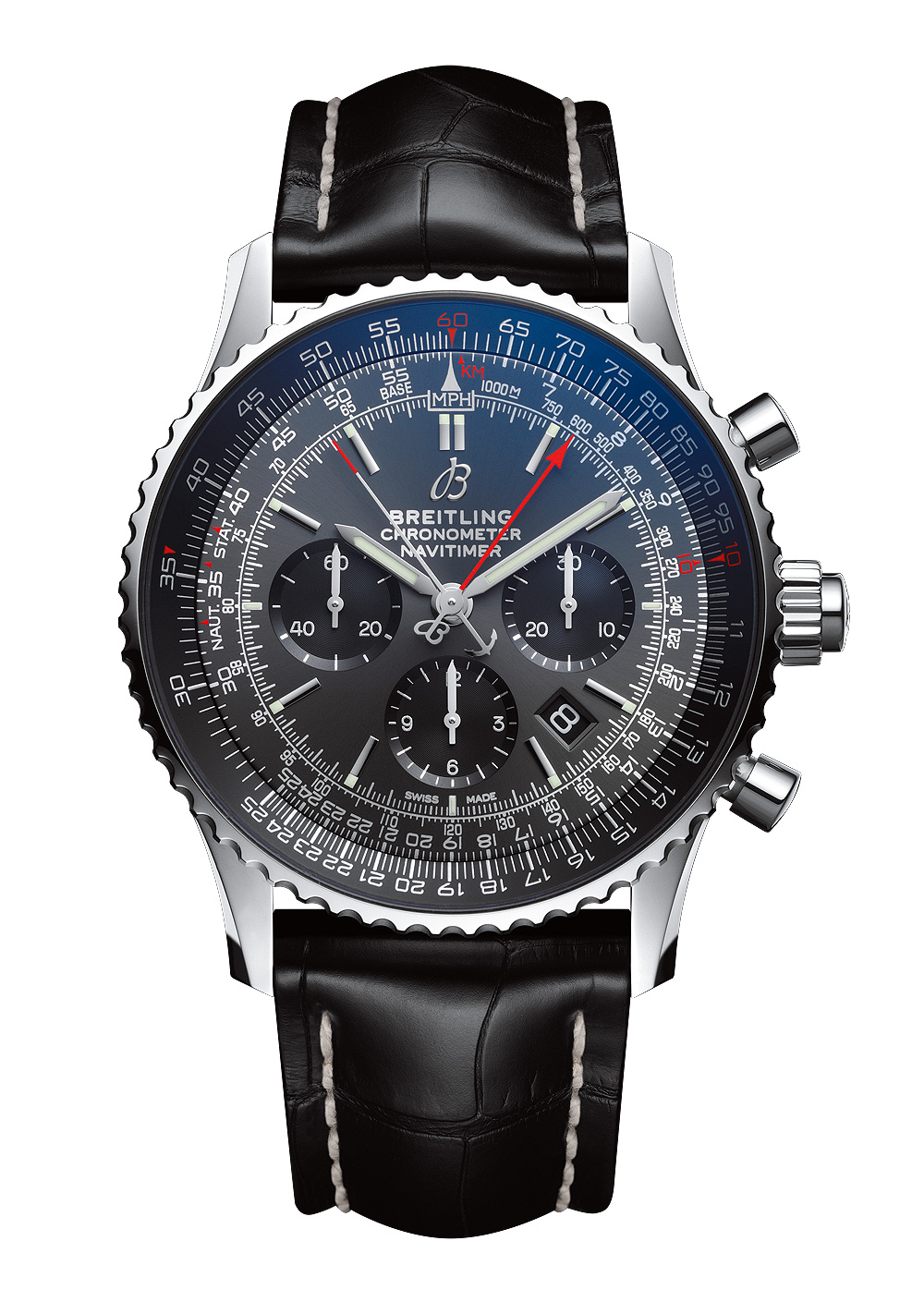
Breitling introduced its Navitimer 1 B03 Rattrapante 45, outfitted with the brand’s first in-house split-seconds chronograph movement, in 2017. At 2018’s Breitling Summit in London, the brand unveiled a new limited version with a “Stratos Gray” dial, available for sale exclusively at the brand’s 70 boutiques worldwide. The timepiece’s boldly proportioned, 45-mm case is made of stainless steel and is outfitted with a convex, double-nonreflective-coated sapphire crystal over the dial. The three dark gray-toned subdials (30-minute chronograph counter at 3 o’clock, 12-hour chronograph counter at 6 o’clock, and small seconds at 9 o’clock) pop against the sleek background of the main dial. The split-seconds pusher is embedded in the 3 o’clock crown. Caliber B03’s modular architecture is built upon the base Caliber B01, Breitling’s first manufacture movement, which is equipped with automatic winding, date indication, an integrated 1/4- second chronograph function, and a 70-hour power reserve. The split-seconds module added to this high-performance horological engine is comprised of only 28 parts, and is fitted between the mainplate and calendar mechanism. Limited to just 250 pieces, the Navitimer 1 B03 Rattrapante 45 Boutique Edition in Stratos Gray is priced at $12,000.
Patek Philippe Ref. 5372P Grand Complication
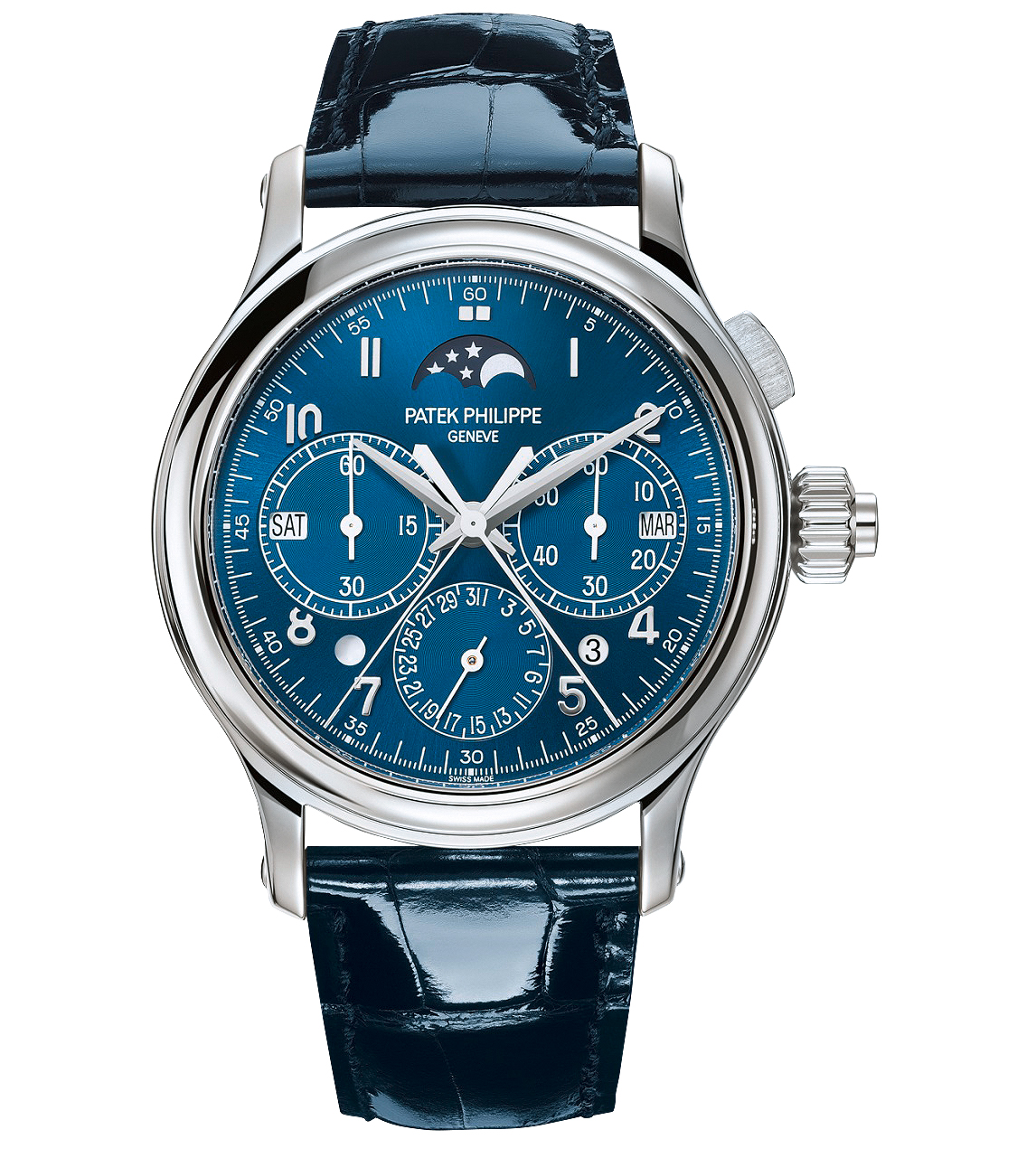
The Patek Philippe Ref. 5372P Grand Complication in platinum was an evolutive release for the legendary independent watchmaking firm when it was announced in 2017. It represented the next phase of the brand’s iconic range of split-seconds chronographs, last updated in 2012 with the contemporary classic Ref. 5204. The 5372P maintains the complementary perpetual calendar functionality, while heightening the complexity of the rattrapante mechanism by making it into a monopusher. The layout of the dial is transformed as well with the chronograph counters at 3 and 9 o’clock flanked by apertures showing the month and day of week, respectively. The date wheel is placed in a subdial at 6 o’clock while the moon-phase has been relocated to 12 o’clock. Small windows on both sides of the date wheel indicate leap year and day/night. The diameter shrinks slightly as well, now coming in at 38.2 mm compared to 40.2 mm for the Ref. 5204. The dial comes in either blue sunburst with gold applied numerals or in vertically satin-finished rose gold. Price upon request.
A. Lange & Söhne Triple Split
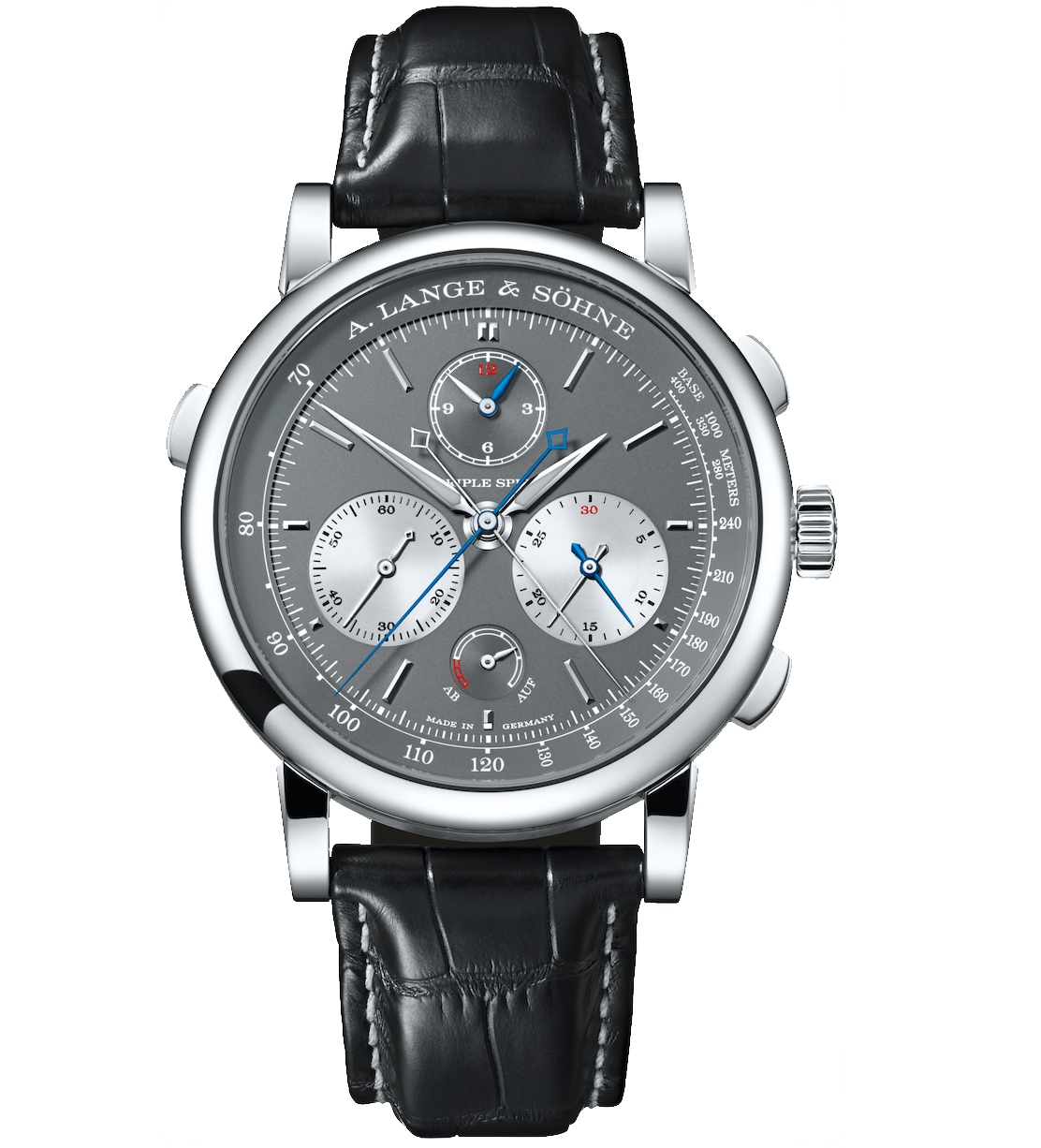
As it often does, A. Lange & Söhne delivered one of SIHH 2018’s most-discussed novelties with the release of the Triple Split, the world’s first mechanical split-seconds chronograph that can perform multi-hour comparative time measurements. The watch’s ability to measure both additive and comparative times up to an astounding 12 hours is achieved by additional rattrapante hands on both the minutes and hours-totalizing subdials. In its switched-off mode, the chronograph’s hand pairs – sweep seconds, minute- and hour-counter hands – are superposed. When the chronograph is activated via its pusher, all these hands start running simultaneously until the rattrapante pusher (on the opposite side of the case) is pressed to freeze intermediate time measurements. Limited to 100 pieces and housed in an 18k white-gold case, the Triple Split is also equipped with a flyback function, one that uses all three hand pairs. Price: approximately $147,000.





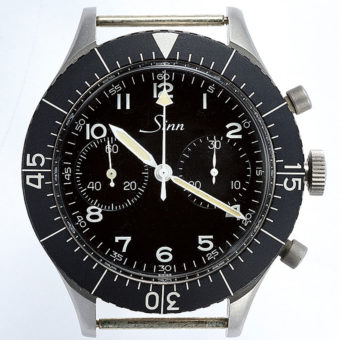
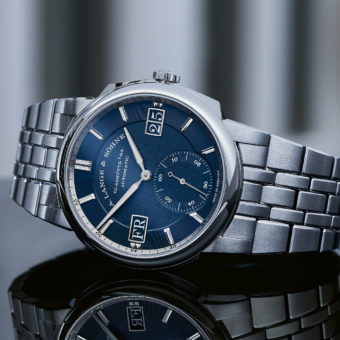
The Czapek with the rattrapante movement on the dial side is stunning.
Quality timepieces overall in the article, but many also feel like the easy rattrapante selections. If this was written even a year from now, the recently-unveiled Czapek Rattrapante would easily make the list!
I totally agree with Menchman…This overpriced pieces are unobtainables anyway…
IWC had a limited Japanese version back the 90’s with exhibition back and two tone Red and blue hands.
Rather miss the larger Patek( not that I could afford either).
Would like to see the ALS in other than platinum and grey.
The FPJ in platinum…
What about Blancpain’s Le Brassus Rattrapante?
Tho top watches. I prefer Schafhausen and latex Philip
Those are really my kind of watches, extremely readable and with the time keeping complications which I need.
Thanks for summarizing them.
I agree, so stylish and practical. The Lange + Sohne and Journe are best.
I assume both these comments are with tongue planted firmly in cheek. But since when is horology about practicality? If you want practical buy a g-shock or better yet just use your smartphone. I hardly use a chronograph much less a Rattrapante. There is hardly a complication beyond a date that is practical. This about watchmakers showing their chops to make beautiful complicated watches. And for some, that’s enough of a reason for them to exist.
Mench, since the digital age when has it been about telling time? You are absolutely correct, if you want to know the correct time, down to the millisecond, anywhere in the world, then your smartphone is probably the most accurate portable timepiece you could own. However, I think anyone that reads this great magazine or has an interest in horology, can identify that one time in their life where their interest was piqued and he fell in love with watches, especially the craftsmanship is involved with building a complicated mechanism like those described above. I can only speak for myself, but my Grandfather immigrated from Germany where his father was a watchmaker. He had inherited about 50 watches from his Father and they were in a cabinet he built. Whenever I would go to visit him it was special to see him pick the watch he was going to wear that day but also take out 10 or so watches and inspect and clean them. Little did I know at age 9, there was a small fortune in that cabinet. He would always give me one pocket watch to carry when we would go out together, it didn’t run, but still, it made me so happy and I felt like a man. When he passed away about 19 years later, my Grandmother said she had to fulfill one special request my Grandfather had. She went into his study and came out with an old box, I could tell it was a watch and thought it was the old pocket watch, but unbelievably, it was a Vacheron Constantin. He had put a handwritten letter in there which explained the joy watches brought him. This is what started my love and collecting of watches. So as I sit here in front of my computer, I could just glance down to the right and see the time that is spot on, but I don’t, I always look down to my left wrist to appreciate the beauty and craftsmanship of whatever watch I choose to wear that day. I never wear that watch, and even though many people have urged me to go find out how much it is worth, I never will because I will never sell it. It is much a part of me as my heart and still conjures up those feelings I had as a child carrying around that old, broken pocket watch.
Beautiful! And so well written – thank you.
Hi David, Thank you for your story. It is a great example of why one can be passionate about horology. However, I am not certain if your feedback is the right reply to Menchman’s comment. I think that he was really only answering to Mark’s comment about “practicality”. And of course, I think that we can all agree that we do not collect timepieces because they are practical. They are not. We acquire these timepieces because they mean something, because they touch our emotions not our rationality. And this where you story fits in: it is filled with emotion. Thank you for sharing.
Beautiful addition to à chronograph, thanks for sharing. Please note that rattrapante comes from the French rattraper.
Beautiful